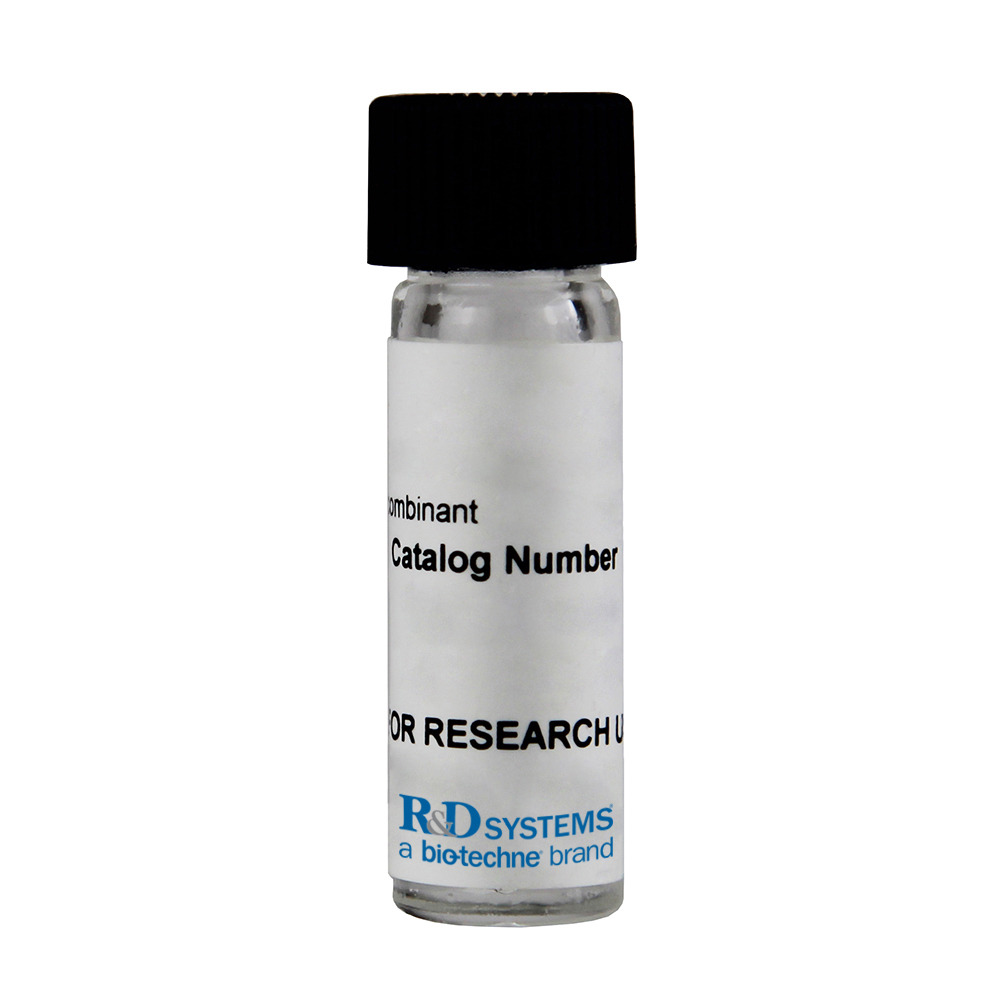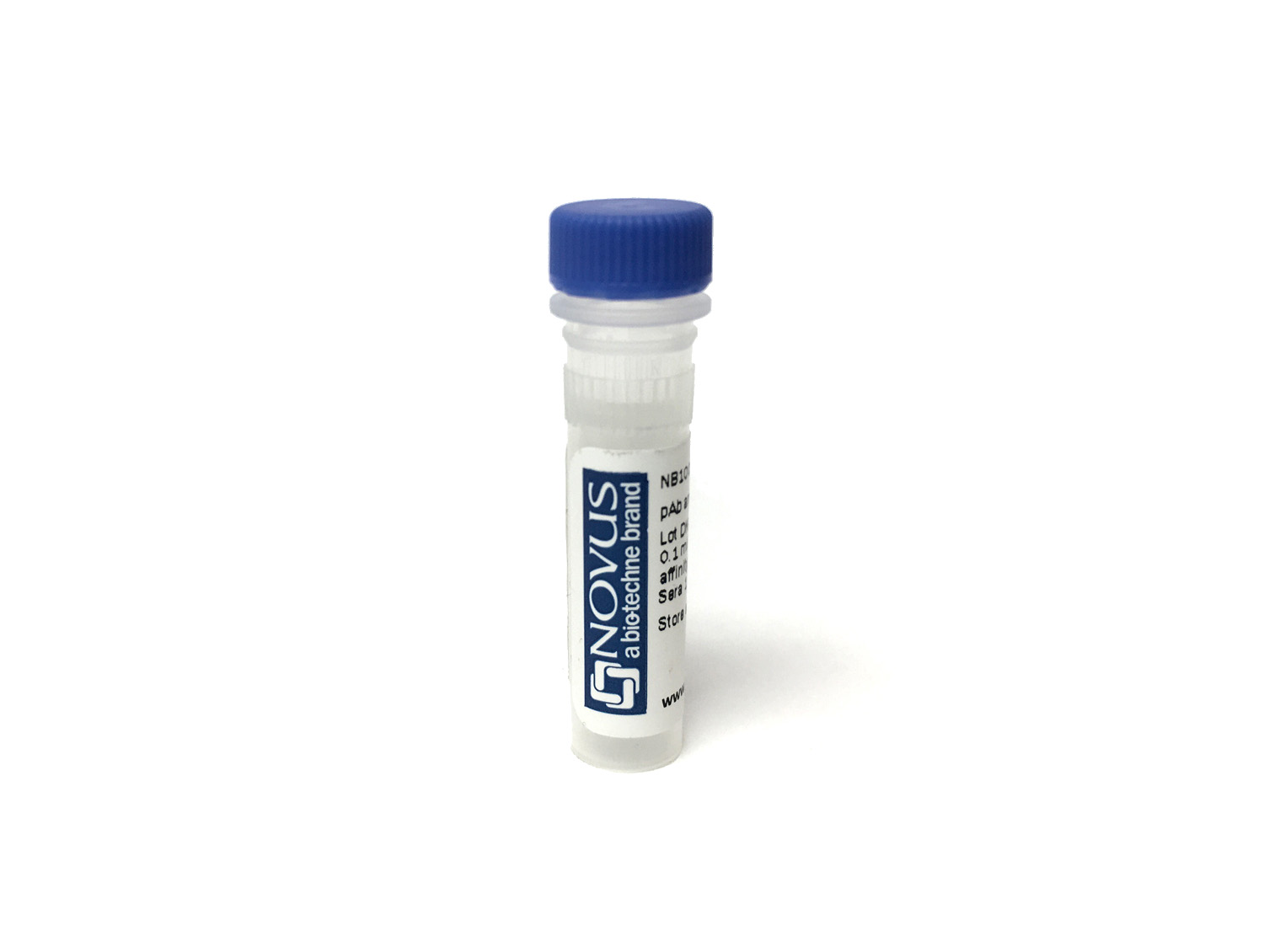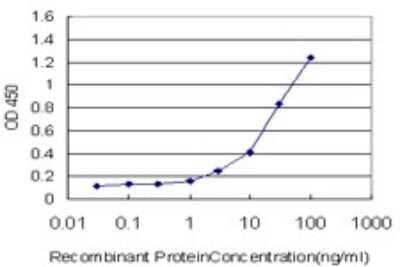Reg1A Products
Reg1A, also known as PTP, PSP, and lithostathine, is a member of the Reg family of secreted proteins with a C-type lectin domain. Due to variable glycosylation, pancreatic Reg1A exists as multiple species of 16 - 18 kDa. Reg1A promotes the maintenance and growth of pancreatic islet β-cells and intestinal villi. It is upregulated in pancreatitis and some carcinomas. Reg1A is an antigenic target in autoimmune diabetes. Human Reg1A shares 65% - 68% aa sequence identity with mouse and rat Reg1A.
49 results for "Reg1A" in Products
49 results for "Reg1A" in Products
Reg1A Products
Reg1A, also known as PTP, PSP, and lithostathine, is a member of the Reg family of secreted proteins with a C-type lectin domain. Due to variable glycosylation, pancreatic Reg1A exists as multiple species of 16 - 18 kDa. Reg1A promotes the maintenance and growth of pancreatic islet β-cells and intestinal villi. It is upregulated in pancreatitis and some carcinomas. Reg1A is an antigenic target in autoimmune diabetes. Human Reg1A shares 65% - 68% aa sequence identity with mouse and rat Reg1A.
| Reactivity: | Human |
| Details: | Rat IgG2b Monoclonal Clone #431202 |
| Applications: | WB, CyTOF-ready, ICFlow |
| Reactivity: | Human |
| Details: | Sheep IgG Polyclonal |
| Applications: | WB, IHC |
| Reactivity: | Human |
| Details: | Rat IgG2a Monoclonal Clone #431211 |
| Applications: | WB, IHC |
| Reactivity: | Human |
| Details: | Rat IgG2b Monoclonal Clone #431202 |
| Applications: | ICFlow |
| Reactivity: | Human |
| Details: | Rat IgG2b Monoclonal Clone #431202 |
| Applications: | ICFlow |
| Reactivity: | Human |
| Details: | Rabbit IgG Polyclonal |
| Applications: | IHC, WB |
| Reactivity: | Human |
| Details: | Mouse IgG2a Kappa Monoclonal Clone #5F8 |
| Applications: | WB, ELISA |
| Reactivity: | Human |
| Details: | Rat IgG2b Monoclonal Clone #431202 |
| Applications: | ICFlow |
| Reactivity: | Human |
| Details: | Rat IgG2b Monoclonal Clone #431202 |
| Applications: | ICFlow |
| Reactivity: | Human |
| Details: | Rat IgG2b Monoclonal Clone #431202 |
| Applications: | ICFlow |
| Reactivity: | Human |
| Details: | Rat IgG2b Monoclonal Clone #431202 |
| Applications: | ICFlow |
| Reactivity: | Human |
| Details: | Rat IgG2b Monoclonal Clone #431202 |
| Applications: | ICFlow |
| Source: | HEK293 |
| Accession #: | P05451 |
| Applications: | BA |
| Reactivity: | Human, Mouse |
| Details: | Rabbit IgG Polyclonal |
| Applications: | WB |
| Applications: | ELISA |
| Reactivity: | Human |
| Details: | Mouse IgG1 kappa Monoclonal Clone #C4 |
| Applications: | IHC, WB, ICC/IF |
| Reactivity: | Human |
| Details: | Rabbit IgG Polyclonal |
| Applications: | IHC |
| Applications: | AC |
| Applications: | WB |
| Reactivity: | Human |
| Details: | Mouse IgG2a Kappa Monoclonal Clone #3C7 |
| Applications: | ELISA |
| Applications: | ELISA |
| Reactivity: | Human |
| Details: | Rat IgG2B Monoclonal Clone #431202 |
| Applications: | WB, Flow, CyTOF-ready |
| Reactivity: | Human |
| Details: | Rat IgG2B Monoclonal Clone #431202 |
| Applications: | WB, Flow, CyTOF-ready |
| Reactivity: | Human |
| Details: | Rat IgG2B Monoclonal Clone #431202 |
| Applications: | WB, Flow, CyTOF-ready |
| Reactivity: | Human |
| Details: | Rat IgG2B Monoclonal Clone #431202 |
| Applications: | WB, Flow, CyTOF-ready |






![Immunohistochemistry-Paraffin: Reg1A Antibody [NBP2-13215] Immunohistochemistry-Paraffin: Reg1A Antibody [NBP2-13215]](https://resources.bio-techne.com/images/products/Reg1A-Antibody-Immunohistochemistry-Paraffin-NBP2-13215-img0004.jpg)
![Western Blot: Reg1A Antibody (5F8) [H00005967-M17-100ug] Western Blot: Reg1A Antibody (5F8) [H00005967-M17-100ug]](https://resources.bio-techne.com/images/products/Reg1A-Antibody-5F8-Western-Blot-H00005967-M17-100ug-img0002.jpg)

![Western Blot: Reg1A Antibody [NBP1-98445] Western Blot: Reg1A Antibody [NBP1-98445]](https://resources.bio-techne.com/images/products/Reg1A-Antibody-Western-Blot-NBP1-98445-img0003.jpg)
![ELISA: Human Reg1A ELISA Kit (Colorimetric) [NBP2-82145] - Human Reg1A ELISA Kit (Colorimetric)](https://resources.bio-techne.com/images/products/nbp2-82145_human-reg1a-elisa-kit-colorimetric-132202416184859.jpg)

![Immunohistochemistry-Paraffin: Reg1A Antibody [NBP2-13216] Immunohistochemistry-Paraffin: Reg1A Antibody [NBP2-13216]](https://resources.bio-techne.com/images/products/Reg1-Antibody-Immunohistochemistry-Paraffin-NBP2-13216-img0003.jpg)
![Western Blot: Reg1A Overexpression Lysate [NBL1-15271] Western Blot: Reg1A Overexpression Lysate [NBL1-15271]](https://resources.bio-techne.com/images/products/REG1-Overexpression-Lysate-Adult-Normal-Western-Blot-NBL1-15271-img0002.jpg)

